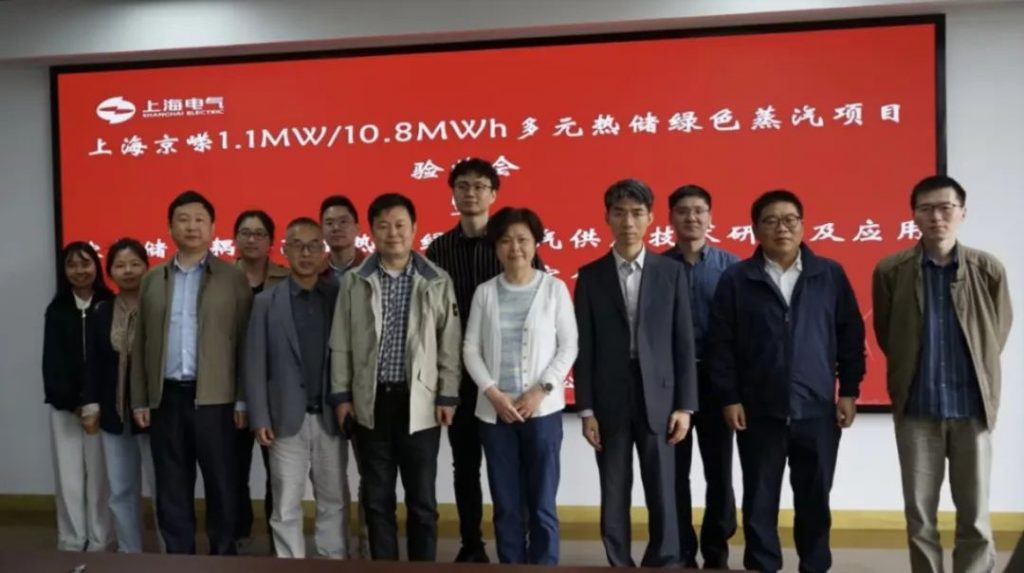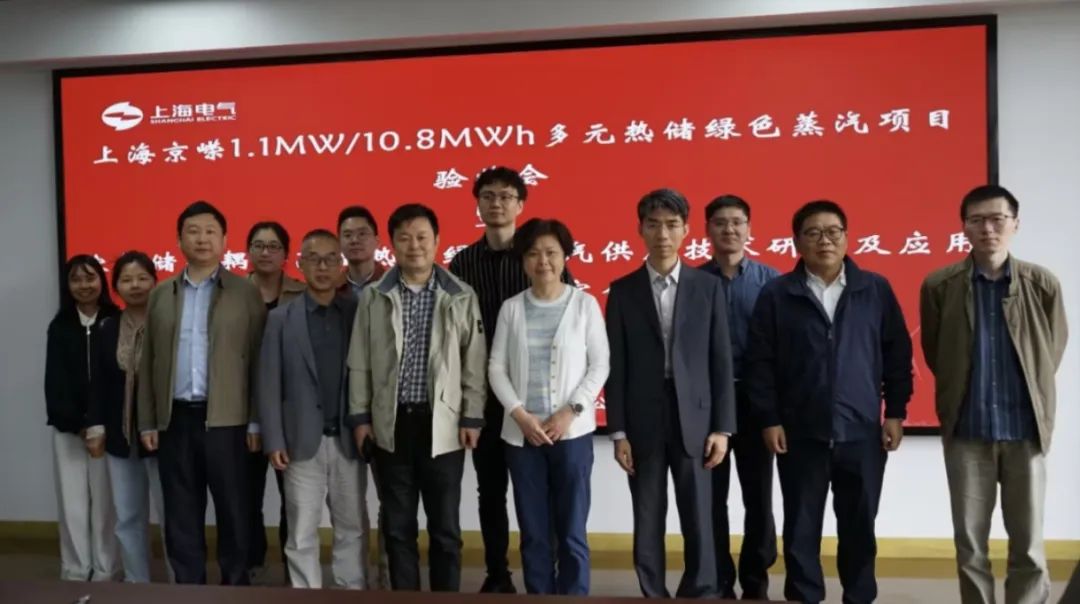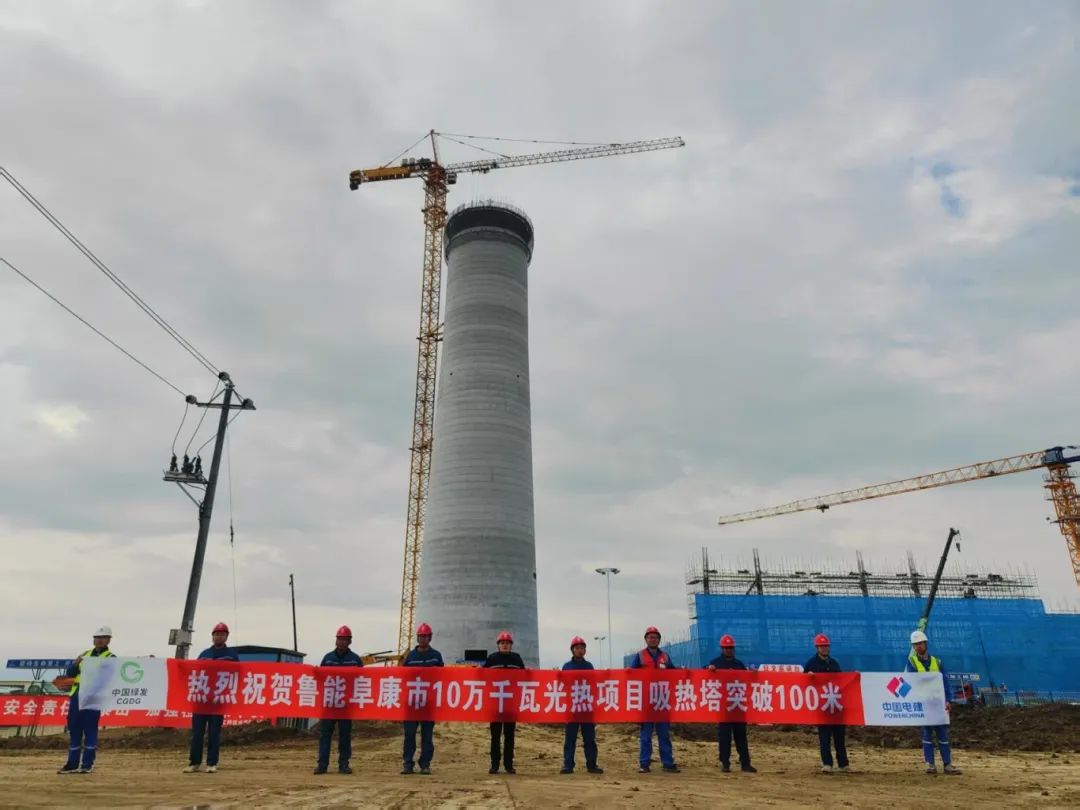On May 9, the “1.1MW/10.8MWh Multi-Energy Heat Storage Green Steam System,” developed by Shanghai Electric Group Central Research Institute based on its proprietary “molten salt heat storage coupled with high-temperature heat pump green steam supply technology,” successfully completed a two-month trial run at a factory in Shanghai’s Fengxian District. All performance metrics met contractual requirements, passing the owner’s acceptance and entering commercial operation.
This milestone marks a major breakthrough in China’s multi-energy heat storage technology, providing a replicable and scalable model for green, low-carbon transformation in the industrial sector.

Filling Technological Gaps to Achieve Efficient Green Heating
The project team, with nearly a decade of expertise in molten salt heat storage, innovatively integrated a single-tank molten salt system (combining storage and heat exchange) with high-temperature heat pumps, overcoming critical technical challenges such as static molten salt heat storage design, long-term non-steady-state heat transfer simulation, molten salt-heat pump collaborative control, and dynamic load matching. The resulting multi-energy integration and cascaded utilization system solution has secured 17 invention patents and 28 utility model patents.
As China’s first multi-energy heat storage green steam demonstration project, its core highlights include:
- Energy Storage Capacity: 1.1MW/10.8MWh, sufficient for continuous heating demand.
- Steam Supply Parameters: Industrial-grade steam quality with flexible flow adjustment based on load variations.
- Energy Efficiency: Overall system efficiency reaches 102%, with electricity consumption per ton of steam at 743 kWh—12% lower than existing technologies.
Technological Breakthroughs with Industrial Value
Concurrently, the Shanghai Energy Conservation Association organized an appraisal meeting for the technology, where seven authoritative experts from energy, environmental protection, and related fields praised its achievements:
- The technology, fully independently developed, innovatively addresses the high energy consumption and emissions of traditional steam supply systems, achieving “domestic leading” status with some metrics reaching “international advanced” levels.
- The project fills a technological gap in China’s integration of multi-energy heat storage and green industrial heating, providing critical support for industrial decarbonization under the “dual-carbon” goals.
- Experts recommended further iterations to scale applications in high-energy industries like chemicals and pharmaceuticals.
Cheng Hao, Deputy Director of the Industrial Department at the China National Textile and Apparel Council, stated, “This project not only delivers clean heat for the textile industry but also sets a benchmark for low-carbon transformation across manufacturing.” Zheng Tan, Industrial Program Director at the Energy Foundation (U.S.) Beijing Office, emphasized, “The integration of heat pumps and heat storage offers efficient, low-carbon solutions for industrial parks. Standardized adoption could accelerate China’s green industrial transition.”
Pioneering a Green Heating Pathway
The technology was previously featured in the Apparel Impact Institute’s European Heat Storage Roadmap and shortlisted among the top ten projects in PepsiCo’s 3rd Asia-Pacific “Green Accelerator” program. The project’s success validates the economic and environmental viability of molten salt heat storage coupled with heat pump technology in industrial settings, propelling China’s green heating sector into a new phase and offering actionable solutions for energy structure optimization and dual-carbon goals.
According to estimates, the project will reduce annual CO2 emissions by approximately 1,100 tons—equivalent to the carbon sequestration of planting 60,000 trees. Last year, Shanghai Electric Central Research Institute signed a memorandum with European fast-fashion giant H&M Group to collaborate on cutting-edge low-carbon technologies, integrated energy systems, and energy storage, aiming to develop tailored high-temperature steam solutions for the textile and dyeing industries.
Ren Ying, H&M Group Energy Expert, highlighted, “This technology’s application supports H&M’s green transition within China’s textile supply chain. We plan to extend it to more partners.”
Driving a Zero-Carbon Future
Shanghai Electric Central Research Institute remains committed to its vision of “sharing, integration, and advancement,” focusing on zero-carbon industrial parks and advanced manufacturing. The molten salt heat storage and heat pump technology, a cornerstone of zero-carbon parks, has demonstrated exceptional performance in industrial heating.
Project Lead Wang Yuan shared, “Building on this success, we will collaborate with industry partners to expand the technology’s applications, accelerate its large-scale adoption, and contribute Shanghai Electric’s expertise to global energy transformation—ushering in a new era of green heating worldwide.”



